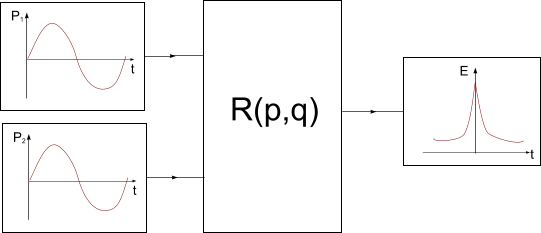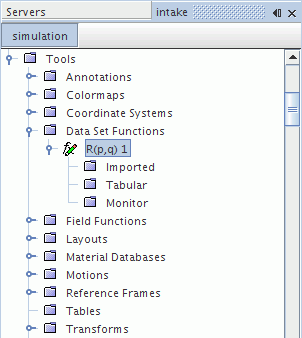Point-to-Point Time Correlations
You use Point-To-Point Time correlations to determine the phase differences between the dominant modes of two input signals.


Point-to-Point Time Correlation Properties
|
Amplitude Function |
Specifies the function that is used to represent the cross-correlation.
|
|||
|
Update Interval |
Sets the number of time-steps after which to update the time history. |
|||
|
Filter Type |
Specifies the type of filter that is applied. |
|||
|
Band pass filter |
Keeps frequencies between low and high cut-off levels. Adds a FIR Filter sub-node in which you can set these levels. |
|||
|
Band stop filter |
Discards frequencies between low and high cut-off levels. Adds a FIR Filter sub-node in which you can set these levels. |
|||
|
Start Time |
The start time for the time sampling of this object. |
|||
|
Cut-off time |
The end time for the time sampling for this object. Clicking the
|
|||
 property customizer button in the right-hand column activates a property customizer that lets you specify both the time value and the appropriate time units (
property customizer button in the right-hand column activates a property customizer that lets you specify both the time value and the appropriate time units (